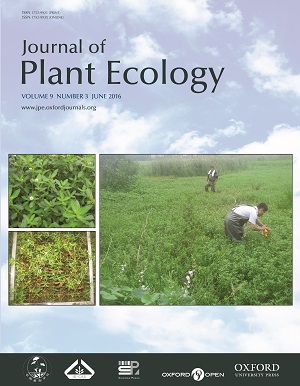Current Issue
-
 Volume 9 Issue 3
Volume 9 Issue 3
Alternanthera philoxeroides is a kind of alien clonal weeds, which is native to South America and has invaded widely in China. Through a large scale field survey along latitudinal gradients, we found that A. philoxeroides invasion increased with latitude rising between N21°–N35° in terrestrial habitats of Mainland China. A small scale invasion could improve community species diversity, but A. philoxeroides reduced biodiversity sharply when its invasion cover exceeded a certain threshold (7%). Alpha diversity declined with latitude increasing in the invaded community (latitudinal gradient diversity, LDG). Thus, with a rapid global warming, the terrestrial A. philoxeroides invasion may be aggravated in higher latitudes in the future. See Hao Wu et al. in this issue.
IF: 3.9
CiteScore: 5.7
CiteScore: 5.7
Editors-in-Chief
Yuanhe Yang
Bernhard Schmid
Yuanhe Yang
Bernhard Schmid
CN 10-1172/Q
ISSN 1752-9921(print)
ISSN 1752-993X(online)
ISSN 1752-9921(print)
ISSN 1752-993X(online)







